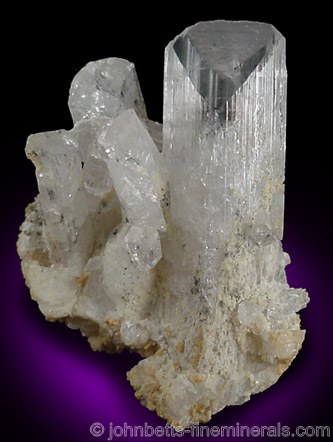The Mineral danburite

Danburite is known for its distinct, well-formed, and often gemmy crystals. Danburite crystals are sometimes coated or entirely encrusted with drusy Quartz, and the Quartz may occasionally form a pseudomorph, completely replacing the Danburite. Danburite is named after the city of Danbury, Connecticut, where this mineral was first described. It was first discovered as a distinct species in 1839 by Charles Shepard, in an undocumented and presumably built-over location within the city.
For additional information, see the gemstone section on Danburite.
Chemical Formula
CaB2Si2O8
Color
Colorless, white, yellow, brown, orange, pink, gray
Crystal System
Orthorhombic
Uses
Danburite forms well-shaped and sometimes totally transparent crystals which are collectors items. Danburite is also occasionally used as a rare colorless or yellow gemstone.
Noteworthy Localities
The most well-known and proficient locality for Danburite, which has produced large and completely transparent colorless crystals, is Charcas, San Luis Potosi, Mexico. Cloudy and stubby Danburite were found in a pegmatite in Verde Mine, La Huerta, Baja California, Mexico; and transparent gray crystals, often well-formed and doubly terminated, come from Alto Chapare, Cochabamba Department, Bolivia.
Some of the largest Danburite crystals every found are from the famous mines in Dal'negorsk, Primorskiy Kraj, Russia. Well-formed and colorless crystals came from the Toroku mine, Takachiho, Miyazaki Prefecture, Japan; and golden yellow crystals from Mogok, Mandalay Division, Burma (Myanmar). Elongated, golden-brown Danburite is found in Anjanabonoina, Betafo District, Antananarivo Province, Madagascar.
In the U.S., Danburite occurrences are very limited. Small beige to brown crystals have been found in Russel, St. Lawrence Co., New York; and a new Danburite occurrence was recently discovered nearby in the town of Macomb, St. Lawrence Co., New York.
Distingushing Similar Minerals
Topaz - Slightly harder, better cleavage, and crystals usually less elongated.
Barite and Celestite - Softer and much heavier.
Scapolite - Different crystals forms, softer.